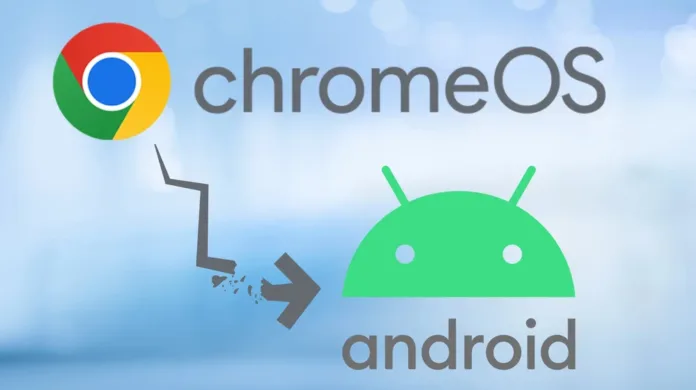The Article Tells The Story of:
- Google finally confirms it’s merging Chrome OS and Android into single software.
- Android 16 adds desktop features as laptops become a new focus
- Executive hints at unified OS while asking about user habits
- Concerns rise about updates, performance, and Chromebook future
Table of Contents
Google Confirms Chrome OS Will Merge Into Android
Google has officially confirmed its plan to combine Chrome OS and Android into a single platform. This public acknowledgment came from Sameer Samat, Google’s President of Android Ecosystem, during a conversation with TechRadar.
Samat asked a journalist why they were using an Apple Watch, iPhone, and MacBook. Then he explained:
“I asked because we’re going to be combining Chrome OS and Android into a single platform, and I am very interested in how people are using their laptops these days and what they’re getting done.”
This brief statement confirms what Squaredtech.co and other outlets first reported back in November: Chrome OS will be folded into Android, not the other way around. Google is not creating a brand-new system. Instead, Android will absorb Chrome OS and expand its capabilities.
This marks a huge shift for Google’s operating system strategy. After years of keeping Chrome OS and Android separate, the company is now aligning its platforms under one unified development model—likely to simplify the experience for users and developers.
Read More About Our Article of Google Shuts Down Android Instant Apps: Why Almost No One Will Notice Published on June 20th, 2025, SquaredTech
Android 16 Prepares for Desktop Use as Merge Moves Forward
Google’s move to merge Chrome OS into Android lines up with Android 16’s new desktop features. These updates include:
- Full desktop mode with windowed apps
- Better external display support
- Improved app scaling for large screens
- New tools for multitasking and productivity
At Squaredtech.co, we see these upgrades as critical steps toward building a true laptop-friendly Android. While Chrome OS has always been optimized for keyboards, mice, and full-size displays, Android has traditionally focused on phones and tablets. That’s changing fast.
By combining Chrome OS into Android, Google can streamline its ecosystem. Developers will write once for Android and support phones, tablets, laptops, and desktops. Hardware partners won’t need to choose between platforms. And Google can focus all innovation into one OS.
Still, Sameer Samat’s comment about asking people how they use laptops suggests that Google is still learning. The project isn’t finished. The company is likely studying usage patterns to refine the final platform experience before launch.
Users React With Excitement—and Concern
Not everyone is thrilled. When Squaredtech last polled readers on whether Google should merge Chrome OS into Android, opinions were split:
- Nearly 50% supported the merger, hoping for better consistency and features.
- Others feared Google might mismanage the transition, breaking Chromebooks or making them harder to update.
- Some worried about increased hardware requirements and whether existing Chromebooks would still receive updates.
These concerns are valid. Merging operating systems can create compatibility issues. If the Android-based system demands more powerful hardware, older Chromebooks could become obsolete. Google hasn’t yet addressed whether current devices will continue receiving updates under the new plan.
Squaredtech is also monitoring how this might affect enterprise adoption. Chromebooks are popular in education and business due to simplicity, updates, and price. A more complex Android-based system could shift that balance—unless Google ensures performance stays stable.
Squaredtech’s Take: A Bold Move That Could Reshape Google’s Future
At Squaredtech.co, we view Google’s decision to merge Chrome OS into Android as a bold and overdue step. For years, developers have dealt with fragmentation between the two platforms. Users have juggled different devices with inconsistent experiences. Merging the systems could solve both problems—if executed well.
We’re already seeing Android’s growth into laptop territory. With features like windowed multitasking and better display management, Android 16 looks more like a desktop OS than ever before. Folding Chrome OS into Android is a natural evolution.
That said, execution is everything. If Google fails to optimize for lower-end Chromebook hardware or doesn’t manage updates properly, it risks alienating key user groups. Education markets, budget buyers, and enterprise users depend on Chrome OS’s stability.
Google has a history of launching new platforms and later abandoning them. This merger needs to avoid that fate. A clear roadmap, strong support, and reliable performance will be key.
Conclusion: Google Begins a New OS Chapter
Google’s confirmation that it’s merging Chrome OS into Android marks a turning point. For the first time, Google will focus on one unified platform across phones, tablets, laptops, and beyond.
This could simplify development, improve device consistency, and unlock new experiences. But the risks—higher hardware requirements, unclear update policies, and user pushback—are real.
At Squaredtech.co, we’ll continue tracking how Google handles the transition and what it means for Android users, Chromebook owners, and developers worldwide.
Stay Updated: Tech News


